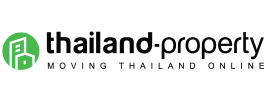
Bangkok’s office occupancy rate reached an all-time high last year according to the latest sector research from real Estate firm Knight Frank in its Bangkok Office Market Q4 2015 report, published yesterday (Tuesday).
Office supply in the capital increased to 4,671,593 sqm and during 2015 supply increased by 96,405 sqm. Knight Frank also noted that the majority of future supply over the next five years will be located in non-CBD areas.
Net take-up during 2015 was 149,301 sqm, the highest since 2011, and the latest occupancy rate stood at 92.8 percent, an all-time high in many years. Overall average rental rate increased from THB 646 in 2014 to THB 695 per sqm, or by approximately 7.6 percent per annum.
Supply
The additional supply came from the completion of AIA Sathorn Tower, Major Tower, and Bhiraj Tower at EmQuartier. Both Major Tower and Bhiraj Highlights Tower at EmQuartier are located in the Inner Sukhumvit area, while AIA Sathorn is only building located on Sathorn Road, close to Chong Nonsi BTS station.
In 2015, 53 percent of the total supply was located outside CBD areas while 47 percent was in the CBD. In addition, there has been a growing supply of office space in non-CBD areas as there is a scarcity of space for development in the CBD.
In 2016, the supply of office space is expected to be approximately 152,960 sqm from five office projects, with approximately 87 percent of the space located in non-CBD areas, while only 13 percent in the CBD. After 2017 it is expected that the majority of new office space supply will be located in non-CBD areas such as Bangna, Outer Sukhumvit, Ratchadapisek, etc.
Demand
The total occupied space stood at 4,334,324 sqm, representing an occupancy rate of 92.8 percent and an increase of 1.3 percent from last year. The highest growth at the end of 2015 was seen in the Grade ‘A’ office in the non–CBD category, with an increase of 8.2 percent year-on-year. However, Grade ‘A’ offices in CBD areas enjoyed the highest occupancy rate of 94.3 percent, but also suffered the lowest growth rate year-on-year at 0.4 percent.
Knight Frank said this should not come as a surprise as the high occupancy rate did not allow for much further growth.
Overall, on an annual basis, the office market showed a growth rate of 2 percent. Contrary to the expectations of many, the slowing growth in the overall Thai economy has not yet had a spill over effect on the office occupancy rate. This is largely due to the rapid growth of the IT sector, where local subsidiaries of major e-commerce businesses now occupy large spaces in buildings such as AIA Capital Center and CyberWorld on Ratchadapisek Road, and Empire Tower on Sathorn.
The growth in this sector has also created a trend where smaller, start-up businesses start moving into larger office buildings from town houses, in order to benefit from improved corporate images and the ease of access to mass transit stations.
In 2015, the net take-up of office space was the highest since 2011, at approximately 149,301 sqm. Also, the total net take-up was even more than the new supply, which was 96,405 sqm. The net take-up of office space has risen every year since 2011. Over the past few years, with a limited supply of office space in CBD areas, Knight Frank anticipates a shift in office take-up from the CBD towards non-CBD areas as some of these areas are within a convenient reach from the CBD through mass transit systems.
In addition, given the current net take-up and new supply rates, there is a possibility of a supply shortage within the next two years.
Rental Rates
The average rental rate in 2015 for Grade ‘A’ offices in both CBD and non-CBD areas showed a high growth rate of between 9 percent and 10 percent from the previous year. Grade ‘A’ offices in the CBD have the highest rental rate, at THB 937 per sqm, followed by those in the non-CBD area at THB 723 per sqm.
The average rental rate for Grade ‘B’ in both CBD and non-CBD areas are lower, and saw a relatively small change from 2014. There was approximately a 5.3 percent rise for Grade ‘B’ in the CBD and 4.0 percent rise for those in non-CBD areas.
When looking at asking rent by major roads, highest quotes could be found from properties on Ploenchit and early Sukhumvit Road. Knight Frank expects to witness the trend for rental rates to continue to grow if the net take-up continues to remain high.
Outlook
The scarcity of office space in Bangkok’s CBD areas is becoming even more pronounced in this quarter with a growing demand but limited supply, whilst the occupancy rate is constantly creeping up. At the current net take-up and available space Knight Frank said that it expects to witness a shortage in the office market within the next two years, which should result in a continuing rise in the rental rate.
Its pace of growth, however, depends largely on the grade of the office and locations; we saw that Grade ‘A’ offices in both CBD and non-CBD areas have a steeper rise than Grade ‘B’. Going forward it expects to see an expansion or a relocation of businesses into non-CBD areas if the supply in CBD remain relatively stagnant.
Whilst the Bangkok office market outperformed many other industries in Thailand as a whole, but the likelihood of a spill over from the stagnant economy and declining exports remains high.















